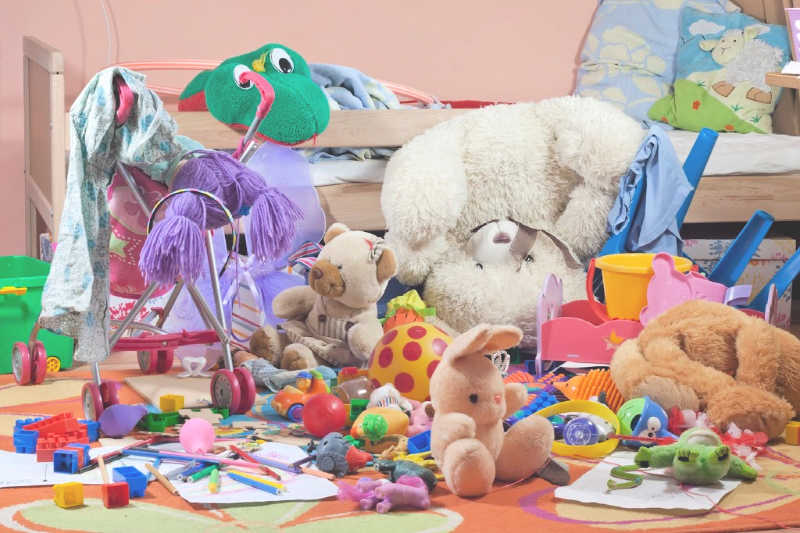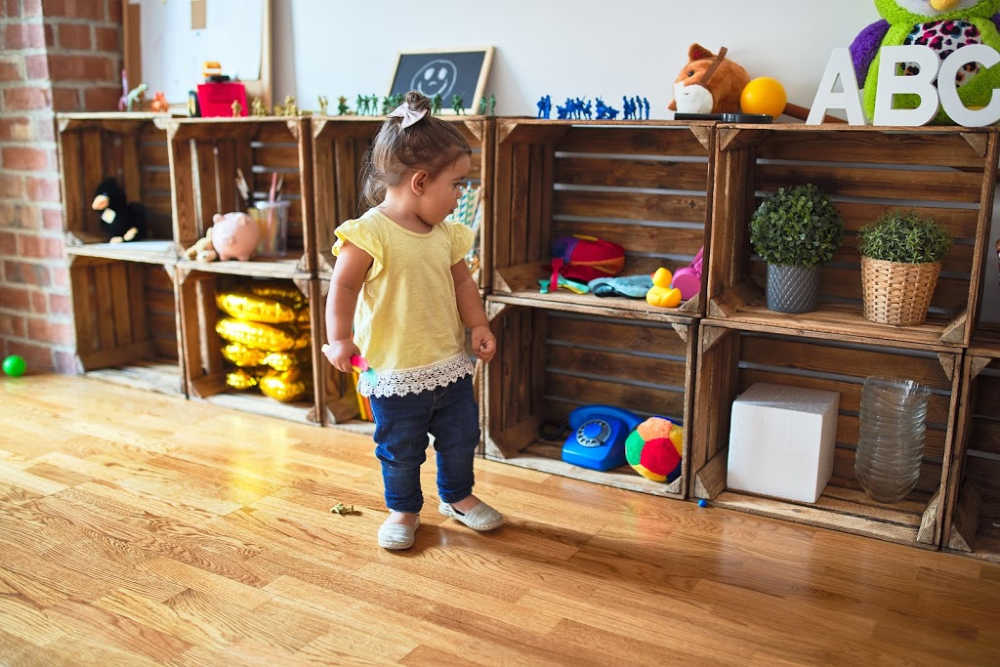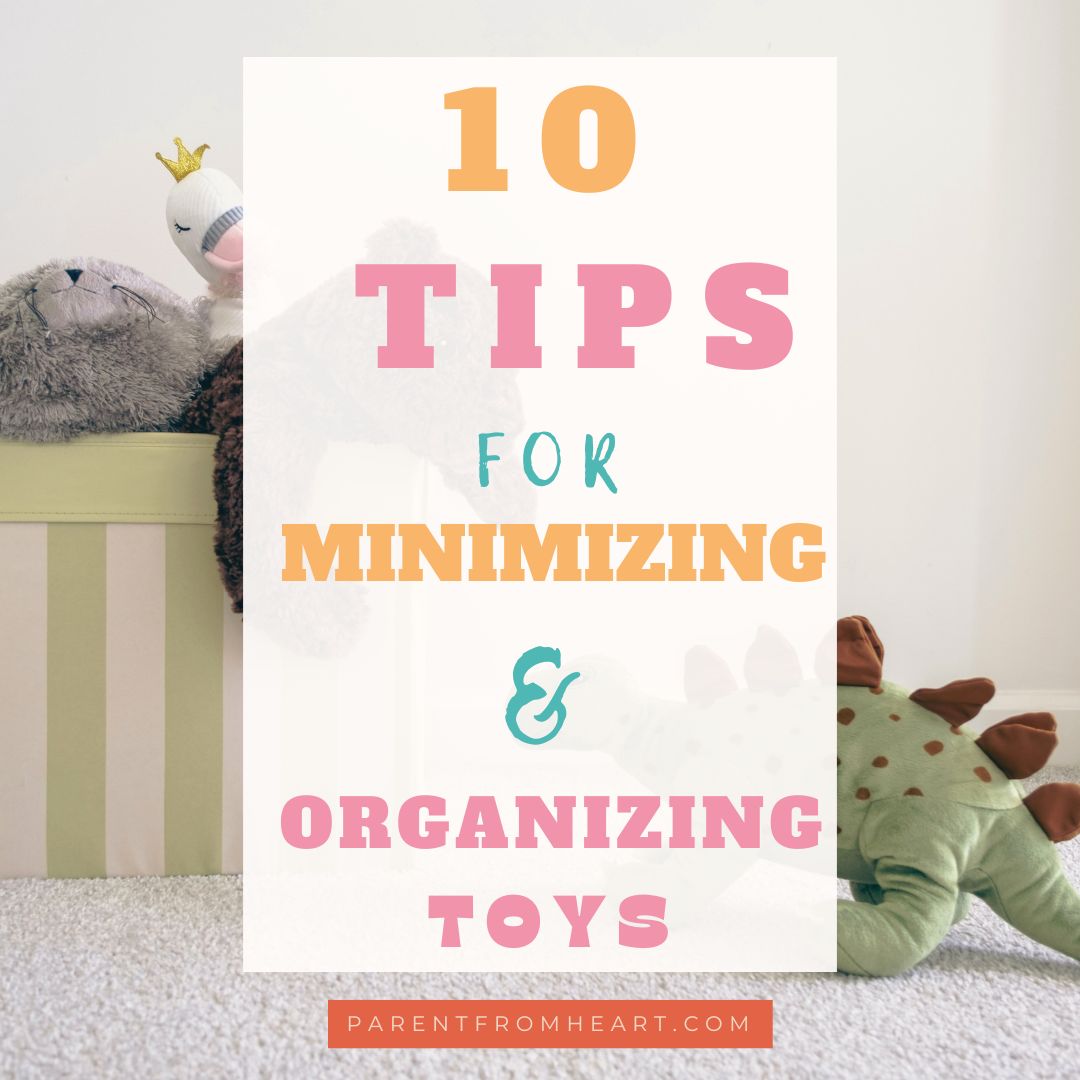If you’re overwhelmed by toys post-Christmas or any time of year, inside is loaded with the best tips…
If you’re overwhelmed by toys post-Christmas or any time of year, inside is loaded with the best tips for minimizing and organizing toys.
Christmas was a success.
The kids are thrilled with their Playmobil, Beyblades and Melissa and Doug Sushi set.
When I sort through everything my kids have from only three and a half years of Christmases, birthdays, and special occasions, I can’t help but be filled with nostalgia and gratitude.
The memories from each stage of my kids’ lives are ones I want to hold onto forever. The immense appreciation I feel for the generosity those in our lives have shown makes me want to keep everything. I don’t want anyone to think even the smallest gift is underappreciated. The counterbalance in this is that I want my sanity. I want my kids to appreciate what they have and I don’t want my home to look as though Toys R Us has thrown up all over it. So, I make a point of parting ways with toys as much as my heart can handle. Here are some of my tips on minimizing and organizing toys.

When it comes to minimizing toys, I try and purge our toys both before and after each special occasion. So once before and once after my daughter’s birthday, once before and once after my son’s birthday, once before and once after Christmas, and once before and once after Oma visits (my husband’s mom lives in Belgium and quite literally is the most generous person I know).
Well before is preemptive and in anticipation for what is to come. After is because once we have received gifts, older toys may seem redundant and of less value. When doing this, despite making things more difficult, I try and involve my kids in the purge. While I don’t do this each and every time, it’s amazing the negotiation tactics a three-year-old can employ when a useless McDonald’s toy gathering dust is about to hit the road for good. However, I want to explain to my kids that some other children are less fortunate than they are and I want them to understand the sacrifice of giving something up for someone who doesn’t have as much as them. I also want to underscore appreciate for the toys they do have.
When minimizing toys, here are some strategies I employ to decide what should stay and what should go.

(I don’t have to describe this too much. You know your kids’ favourites)
Examples include blocks, figures, items that are toy versions of real-life items, play dough, dress-up clothes, and arts and crafts supplies. Play is pertinent for exploration, problem-solving, and trying out more complex skills and these toys encourage this.
Examples include what is mentioned above, dollhouses, train sets, and lego are all items that can accommodate the most primitive to the most elaborative of play.
Dolls, farms, blocks, cars, trains, planes, phones, and other similar items have been played with for generations. When it comes to longevity and the relevance of toys timeless seems to be one of the best rules of thumb.

The exer-saucer, play mat, and textured baby dolls are amazing educational toys from the under one crowd. Shortly thereafter, they need to go. The same goes for Duplo after your kids have graduated completely to lego and so forth.
You may think but my Vtech or Leap Pad toy is educational. Of course, it sings, moos, and rhymes more than any other toy listed in the examples above. However, it requires next-to-nothing from your child.
Sure your child may join in their approximation of song, or press a combination of lights, but research shows these are the worst toys. While a song that plays inside a toy castle, or a train noise on a train set are hardly a big deal, the ones that are reliant on batteries for the majority of their value are worth donating. Based on the best information at hand, these toys are used literally and evoke little to no imagination or any of the benefits of play-based learning. Consider wooden blocks versus a buttoned, battery-operated toy. In the case of the former, they can be used to build a house, barricade, or anything a child can imagine. In contrast, the latter tends to be used only the way the toymaker intended it to be used.
Playmobil, Mr. Potato Head, Lego, and Mega Bloks all have self-contained options. When choosing gifts for friends’ kids, I love choosing something that can be put away inside itself.
I try and keep things organized in their respective containers away from our main play area. The kids can go and grab a container or two to play with. Once those toys get cast aside or we are moving on to something else, we return them to their containers. (NB I’m not perfect at this. It is a continual work in progress).
Using the shelves of closets, the basement, crawl space, attic, or storage area in your apartment building, rotate out your children’s toys. Check out our ideas of how to store stuffed animals for more inspiration. Recently, I asked my kids to help me as we organized toys into three piles. First, favourite toys that they play with almost every day. Then, we split the remaining toys into:
After that, I cleared two shelves in our garage. Then, set up the toys like toys in a store. They agreed that each time they wanted to get a toy, they would exchange it for one they had out.
Since minimizing and organizing toys, the kids play more. This is because they are overwhelmed less by a surplus of stuff. Not only that, but clean-up is less overwhelming too. Now, they have the space to play more freely. And, when they get bored, we can venture into the garage and get “new” toys.
Child stress and the undeclared war on childhood. This is how we stop it.
Science says this is the best approach to extracurricular activities for kids.
Why breaking the Golden Rule of screentime is better for your family.
I’ve always been fascinated by the childhood stories of successful people, those anecdotes about parental quirks and unique…
Ever caught yourself nudging a rogue pea back into its lane, even though you’re decades past the kids’…
Affection wasn’t really a thing in my childhood home. My parents were good providers, but hugs, “I love…